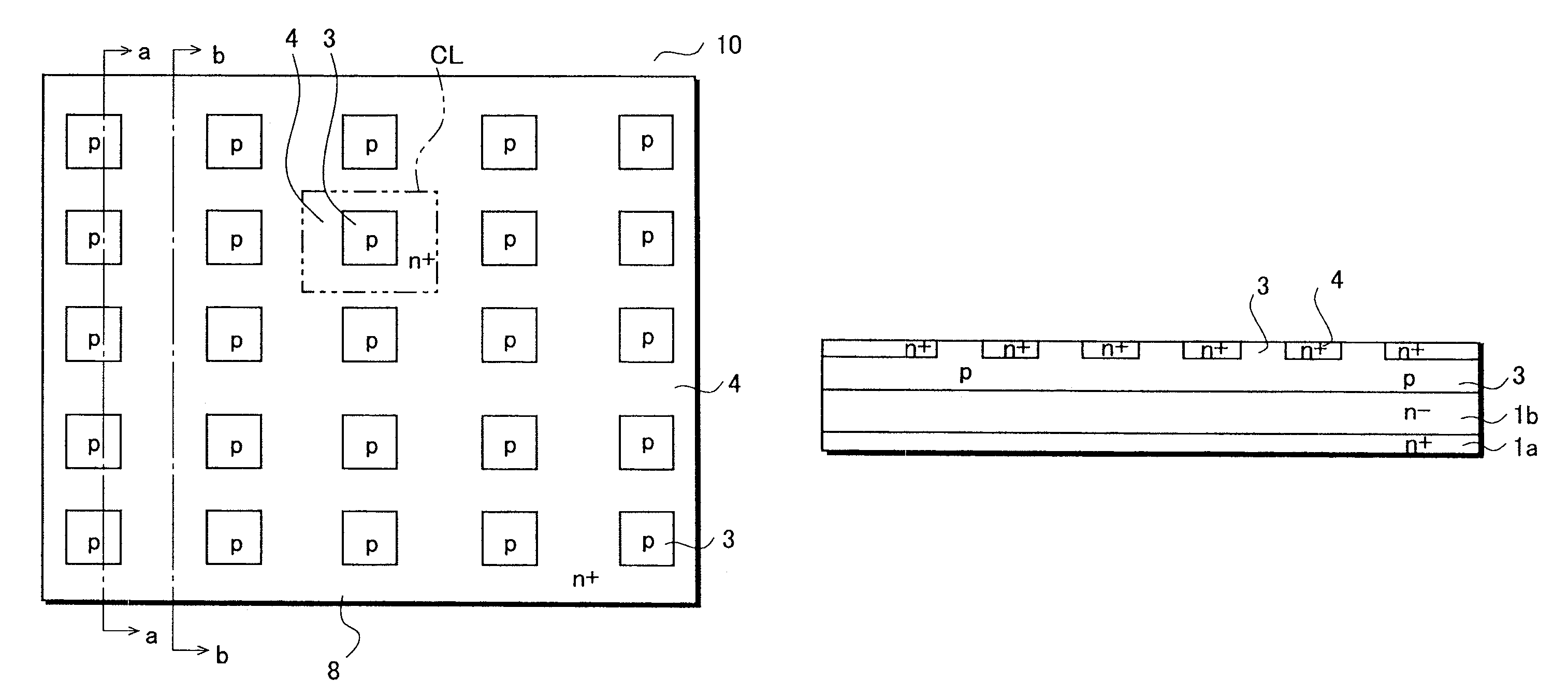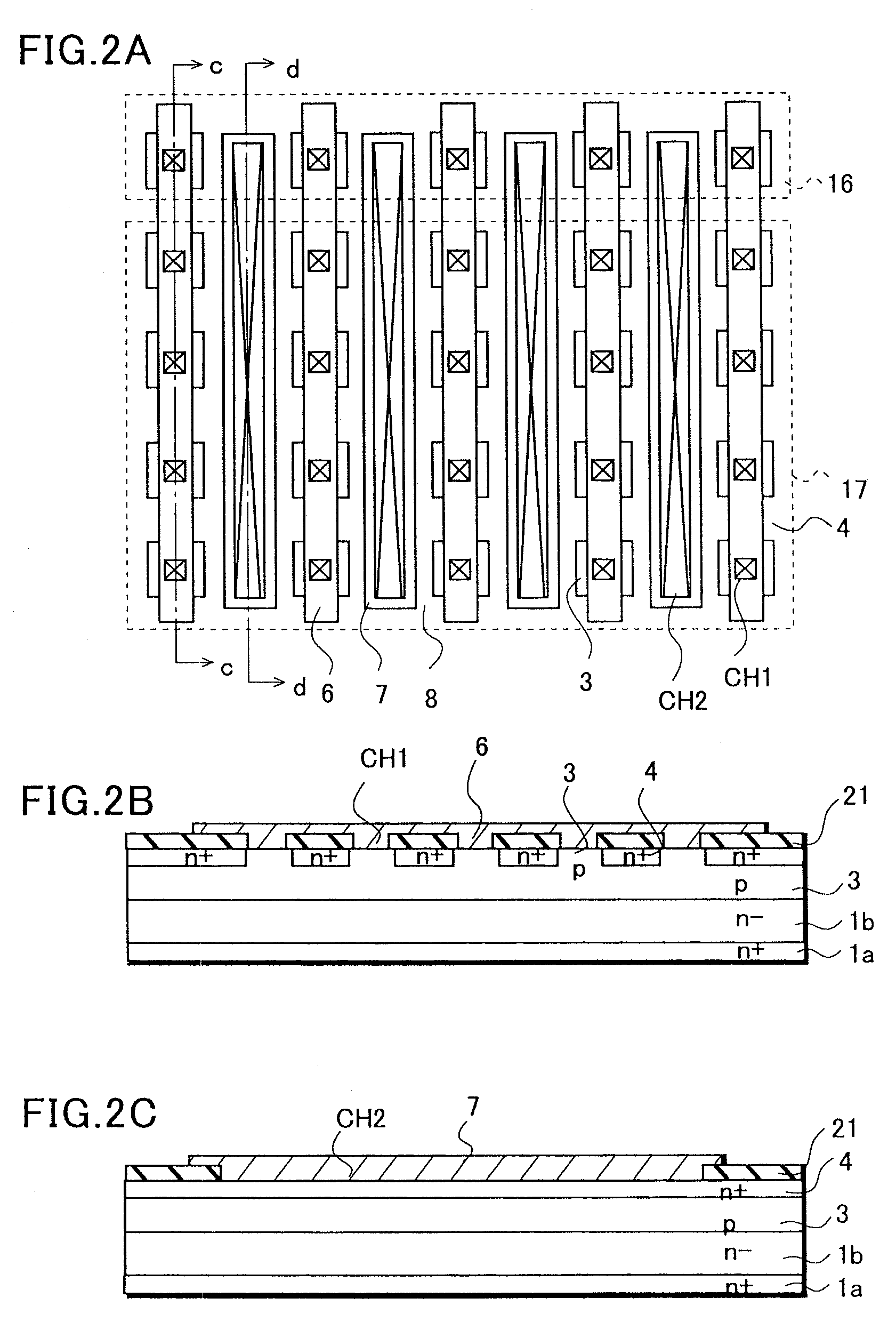Semiconductor device
a technology of semiconductors and devices, applied in the direction of semiconductor devices, electrical devices, transistors, etc., can solve the problems of uneven current densities of chips, narrow safe operating area, and risk of thermal runaway, so as to increase resistance components and increase current densities. uneven
- Summary
- Abstract
- Description
- Claims
- Application Information
AI Technical Summary
Benefits of technology
Problems solved by technology
Method used
Image
Examples
first embodiment
[0022]FIGS. 1A to 1C are views showing a structure of the semiconductor device 10, which is a FIGS. 1A to 1C show an operating region. FIG. 1A is a plan view. FIG. 1B is a cross sectional view taken along the line a-a of FIG. 1A. FIG. 1C is a cross sectional view taken along the line b-b of FIG. 1A.
[0023]A semiconductor substrate 1 is formed with an n+ type semiconductor substrate 1a of high concentration having an n− type semiconductor layer 1b provided thereon by epitaxial growth, for example. The semiconductor substrate 1 serves as a collector region of a bipolar transistor.
[0024]A base region 3 is a p-type diffusion region provided on a surface of the collector region. On a surface of the base region 3, an emitter region 4 is formed by diffusing n+ type impurities in a lattice pattern. With this, the base region 3 is separated into islands which are shown in squares in FIG. 1A. Here, the base region has its surface portion separated into islands, and a deep region which is form...
second embodiment
[0046]With reference to FIGS. 4A and 4B and FIGS. 5A to 5C, a description will be given of an example of the semiconductor device 10 described above. FIGS. 4A and 4B are plan views showing a second base electrode 16 and a second emitter electrode 17 of the semiconductor device 10. FIG. 4A is a plan view showing both electrode layers and a part of configuration of the lower layers. FIG. 4B is a plan view illustrating the second base electrode 16, the second emitter electrode 17, and an external connection connected thereto.
[0047]In the second embodiment, the second base electrode 16 and the second emitter electrode 17 are respectively patterned either into a concavo or convex shape, and are arranged so that concave portion engage with convex portion. A configuration here is similar to that of the first embodiment except for the pattern of the second base electrode 16, the pattern of the second emitter electrode 17, and the external connection connected to the second emitter electrode...
PUM
 Login to View More
Login to View More Abstract
Description
Claims
Application Information
 Login to View More
Login to View More - R&D
- Intellectual Property
- Life Sciences
- Materials
- Tech Scout
- Unparalleled Data Quality
- Higher Quality Content
- 60% Fewer Hallucinations
Browse by: Latest US Patents, China's latest patents, Technical Efficacy Thesaurus, Application Domain, Technology Topic, Popular Technical Reports.
© 2025 PatSnap. All rights reserved.Legal|Privacy policy|Modern Slavery Act Transparency Statement|Sitemap|About US| Contact US: help@patsnap.com



